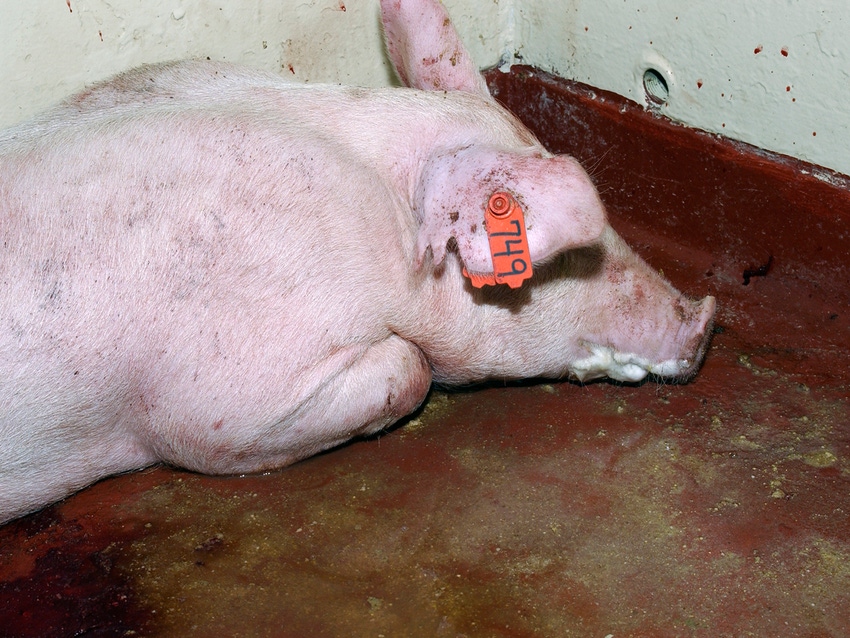April 27, 2020

A new study conducted by Iowa State University agricultural economists estimates the economic impact of a hypothetical African swine fever outbreak in the United States. The study replicates the impact of the loss of pork export markets and found an outbreak could cost the swine industry as much as $50 billion over 10 years.
Export sales of U.S. pork reached an all-time high in 2019 of $6.95 billion metric tons (5.89 billion pounds), with exports accounting for 26.9% of the market. The export market returns an average $53.51 per head back to U.S. pork producers.
"Pork production in the U.S. exceeds domestic consumption by 25% to 30%, so it's important to have export markets open as they are imperative to the vitality of the American pig farmer," says Dermot Hayes, Iowa State University agricultural economist and one of the authors of the study.
Implication for the pork industry
The study results indicate the costs associated with an ASF outbreak in the United States are significant and require risk mitigation and safeguards to protect against importing the disease.
"Movement data will be needed for people, pigs, vehicles, equipment and feed for each site within your operation," says Howard Hill, DVM, PhD. "The data will need to be shared quickly with state and federal animal health officials, your veterinarian, as well as neighboring producers to help each other contain the disease."
Having immediate access to electronic data for all types of pig movement is a crucial step to stopping the spread of ASF. This information will be required to prove negative status of farms, so the industry can maintain business continuity.
"Keep in mind that at any point in time, we have more than one million pigs on the road being transported in the United States. We need a method to quickly identify infected pigs and the pigs that have been in contact with infected pigs, so they can be euthanized. This would allow the industry to regain export markets before downsizing occurs, thus saving billions in losses," says Hill.
Study design
The study established a baseline scenario which represents the status quo (where no ASF disease exists). Two scenarios are compared to the baseline to estimate the impact of industry downsizing on the U.S. economy.
Two-year scenario — assumes the United States quickly gets the disease under control and reenters export markets within two years.
All-years scenario — assumes the disease spreads to feral swine and the United States is unable to eliminate the disease over the 10-year projection period; and exports never resume.
Key impacts
Currently, the rate of pork production is increasing due to expansion of the breeding herd. USDA's long-term forecast for pork is a 1.5% increase per year. However, production is trending higher than the forecast, up 3% and breeding inventory is up 2%.
If ASF were identified in the United States, export markets would immediately close to U.S. pork, including ASF-positive countries such as China and the Philippines, which prohibit the importation of pork from any country with the ASF virus. U.S. live hog prices would drop by 40% to 50% to sell the surplus of pork intended for export. The oversupply of pork in the domestic market would lead to price reductions of other proteins. Lower demand for grain would reduce feed prices.
The long-term impacts are dependent on the scenario:
Revenue losses — lower prices and quantities sold would lead to a decline in pork industry revenues
Two-year scenario — $15 billion in losses
All-years scenario — $50 billion in losses
Employment
Two-year scenario — minimal job losses at the end of 10 years
All-years scenario — 140,000 job losses at the end of 10 years; 22,000 lost jobs in Iowa
Swine industry downsizing
Two-year scenario — exports resume before downsizing occurs
All-years scenario — industry reduction after about five years and remains at a lower output
"Ensuring a two-year scenario versus the all-years scenario means a $35 billion difference to the industry because we avoid downsizing," says Hayes.
The study was funded by Iowa State University and BarnTools, a digital biosecurity platform company; and is an update to "Economy Wide Impacts of a Foreign Animal Disease in the United States" published in 2011 and funded by the National Pork Board.
Sources: Iowa State University and BarnTools, which are solely responsible for the information provided, and wholly own the information. Informa Business Media and all its subsidiaries are not responsible for any of the content contained in this information asset.
You May Also Like




